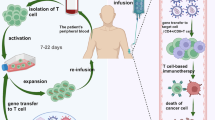Abstract
THE delayed hypersensitivity (DH) reaction seems to be enhanced by treatment with cyclophosphamide and this has been discussed in the context of depression of antibody production1–4. Askenase et al.5, however, reported that low doses of cyclophosphamide augmented the reaction to sheep erythrocytes without affecting antibody production. Polak and Turk6 suggested that cyclophosphamide could break down immunological tolerance to the dinitrophenyl group, as measured by a skin reaction in guinea pigs after treatment with the drug to inhibit suppressor cells. The nature of the suppressing cells was not clear at the time. We report here that treatment of mice with cyclophosphamide also significantly affects DH reaction to methylated human serum albumin (MHSA)7 which induces little antibody production, and that the enhanced DH reaction is caused by damage to T rather than B cells. Independent recovery, from the damage due to cyclophosphamide, by individual subpopulations of T cells accounts for the kinetics of this phenomenon.
Similar content being viewed by others
References
Turk, J. L., Parker, D., and Poulter, L. W., Immunology, 23, 493–501 (1972).
Lagrange, P. H., Mackaness, G. B., and Miller, T. E., J. exp. Med., 139, 1529–1539 (1974).
Mackaness, G. B., Lagrange, P. H., Miller, T. E., and Ishibashi, T., in Activation of Macrophages (edit. by Wagner, W.-H., and Haln, H.), 193–209 (Excerpta Medica and American Elsevier, 1974).
Kerckhaert, J. A. M., Ann. Immun., 125, 559–568 (1974).
Askenase, P. W., Hayden, B. J., and Gershon, R. K., J. exp. Med., 141, 697–702 (1975).
Polak, L., and Turk, J. L., Nature, 249, 654–656 (1974).
Crowle, A. J., Hu, C. C., and Patrucco, A., J. Allergy, 42, 140–156 (1968).
Baba, M., Harada, T., Morikawa, S., Yasuhira, K., and Mitsuoka, A., Proc. Jap. Soc. Immun., 5, 465–467 (1975).
Morikawa, S., Kekkaku (Japanese), 48, 519–521 (1973).
Bach, J.-F., The Mode of Action of Immunosuppressive Agents, 173–225 (North-Holland, and American Elsevier, 1975).
Kerckhaert, J. A. M., Van den Berg, G. J., and Willers, J. M. N., Ann. Immun., 125, 415–426 (1974).
Baba, M., Harada, T., and Morikawa, S., Proc. Jap. Soc. Immun., 3, 177–179 (1973).
Turk, J. L., and Poulter, L. W., Clin. exp. Immun., 10, 285–296 (1972).
Morikawa, S., Clin. Immun. (Japanese), 7, 437–445 (1975).
Poulter, L. W., and Turk, J. L., Nature new Biol., 238, 17–18 (1972).
Stockman, G. D., Heim, L. R., South, M. A., and Trentin, J. J., J. Immun., 110, 277–282 (1973).
Author information
Authors and Affiliations
Rights and permissions
About this article
Cite this article
MITSUOKA, A., BABA, M. & MORIKAWA, S. Enhancement of delayed hypersensitivity by depletion of suppressor T cells with cyclophosphamide in mice. Nature 262, 77–78 (1976). https://doi.org/10.1038/262077a0
Received:
Accepted:
Issue Date:
DOI: https://doi.org/10.1038/262077a0
- Springer Nature Limited
This article is cited by
-
Protective effects of Zhuyeqing liquor on the immune function of normal and immunosuppressed mice in vivo
BMC Complementary and Alternative Medicine (2013)
-
Escalated lymphodepletion followed by donor lymphocyte infusion can induce a graft-versus-host response without overwhelming toxicity
Bone Marrow Transplantation (2012)
-
Phenotype, functions and fate of adoptively transferred tumor draining lymphocytes activated ex vivo in mice with an aggressive weakly immunogenic mammary carcinoma
BMC Immunology (2010)
-
Apoptosis as a mechanism of T‐regulatory cell homeostasis and suppression
Immunology & Cell Biology (2008)
-
Maintenance treatment with interferon-gamma and low-dose cyclophosphamide for pediatric high-grade glioma
Journal of Neuro-Oncology (2006)





